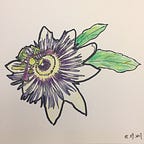TransLoc Rider is a bus-tracking mobile application that I use every day to get real-time information about shuttles , such as where the closest stop is and when the next bus will arrive.
What’s good about it?
It is consistent. The same objects are represented by the same symbol, such as buses and stops; each route has a unique color; information about a particular stop is presented in the same format for all stops. Consistency makes the interface learnablefor new riders and memorablefor casual riders, because as soon as they grasp the basics about how to navigate one stop or route, they do it in the same way for all.
The app drew these design decisions from existing patterns of the underlying map, which traditionally has a set of symbols to represent different landmarks. As most users are familiar with digital maps, learning to use Rider becomes even easier.
What are not so good and how to improve them?
As a frequent user, however, I have a few complaints.
Firstly, it is not efficient when I look for possible routes for a stop. Whenever I click a route from the tab below, I enter a new page and have to navigate back to check another route. From the designer’s perspective, a new page only stops for this route is a clean presentation. For users, however, navigating back and forth sacrifices efficiency. This constraint comes from the nature of mobile app, a small container which has to provide all information. A new page seems to be a good choice for designers to clearly present new information, but it costs more effort from users.
For usability, I suggest prioritizing efficiency by showing the route on the original page to save an extra click, because it is still reasonably clean and delivers the same information about route.
Also, it is difficult to differentiate between active and inactive routes, as the only cues are small texts on the edge. While this is consistent and aesthetically pleasing for designers who value consistent patterns, it lacks clarity for users — all routes are presented the same, so they have to look for details on the right to find route availability.
I suggest changing all information of an inactive route to grey, making the differentiation more obvious to discover, so that users will find it easier to see routes they can take.
Lastly, I often click a stop on the opposite of the road by mistake, as two stops on a road are always close. The only way is enlarging the map to a great extent, which is inefficient.
However, this constraint is hard to overcome, as the everything on the map uses the same scale, and we have to present the stops in actual locations accurately. It is easy for a mouse cursor to click correctly on a larger computer screen, but hard for a finger to tap on a mobile. Let me know if you have any idea to solve this problem!
